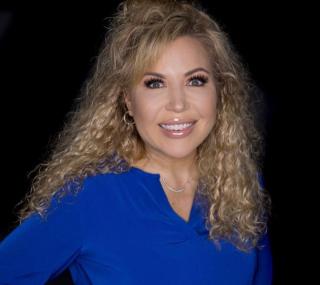Making the Most of Multicultural Marketing

In this day and age of greater inclusivity, food retailers are often urged to adopt multicultural marketing programs, but many aren’t sure how necessary it actually is. Christena Garduno, CEO of Media Culture, a Dallas-based multichannel brand response media agency, dispels all doubt on that score.
“Recognizing that the country is more racially and ethnically diverse is essential,” asserts Garduno. “One hundred percent of the U.S. population growth has come from multicultural groups from 2016 to 2020, now making up 40% of the population. Responsibly marketing to these high-growth consumers offers a tremendous opportunity to gain market share. … From the economics standpoint, these diverse groups account for $4.3 trillion in buying power, according to the Selig Center for Economic Growth. If growth is a cornerstone of marketing, and diversity is driving growth in the U.S., grocers prioritizing multicultural marketing will maximize their business’ growth potential.”
[Read more: "Instacart Rolls Out New Marketing Solutions, Expanded Loyalty Programs"]
Once a food retailer has committed to developing a multicultural marketing strategy, what barriers is it likely to face? “Connecting with a diverse consumer base poses a few challenges for grocers, such as language barriers, cultural differences, varying dietary needs, and accessibility,” notes Garduno. “To overcome the language barrier, grocers can take steps such as putting up bilingual signs, providing translation services and hiring multilingual employees. Additionally, grocers can cater to diverse cultures by offering a range of products that reflect their community’s ethnic foods, specialty products and traditional items. Hosting cultural events and cooking classes can also help build stronger customer relationships.”
Even with the best intentions, however, multicultural marketing efforts can fall flat if grocers aren’t careful. According to Garduno: “Inauthentic representation is one of the biggest mistakes: A study by Accenture found that 43% of consumers are more likely to switch brands if they perceive the brand’s diversity and inclusion efforts as inauthentic or ‘tokenistic.’ Consumers want to see brands that are genuinely committed to diversity and inclusion rather than simply using it as a marketing tactic. Unfortunately, these campaigns can also perpetuate stereotypes, be superficial or tone-deaf, or be culturally insensitive to diverse groups.”
Asked about best practices for a successful program of this kind, Garduno replies: “Multicultural marketing in grocery stores should offer promotions, products, displays, signage, circulars and staff training that cater to different cultural groups’ diverse needs and preferences. For instance, this can involve providing discounts on ingredients frequently used in Latino or Asian cuisine during cultural holidays, highlighting products in store flyers and displays that are relevant to different cultural groups, creating displays that highlight the diversity of the products offered, and using inclusive signage that is culturally appropriate. Also beneficial is trained staff knowledgeable about the products and cultural practices of the communities they serve. … Grocers that feature diverse individuals in their marketing assets in a culturally relevant way are more likely to resonate with diverse audiences and see increased engagement and sales.”
As for what’s next on the multicultural marketing horizon, “retail media is an emerging channel for the marketing industry,” says Garduno. “Grocery retailers own the data on their customers, which can be leveraged to provide brands with a way to target diverse customers more effectively at the point of purchase. Retail media can offer grocery retailers an additional revenue stream, with a profit margin between 40% and 80%.”
The bottom line is that effective outreach to diverse shoppers is a win for all parties involved. As Garduno observes, “Overall, successful multicultural marketing that authentically promotes inclusivity and diversity will help drive growth and profitability and enable grocery stores to provide better experiences for all their customers.”







